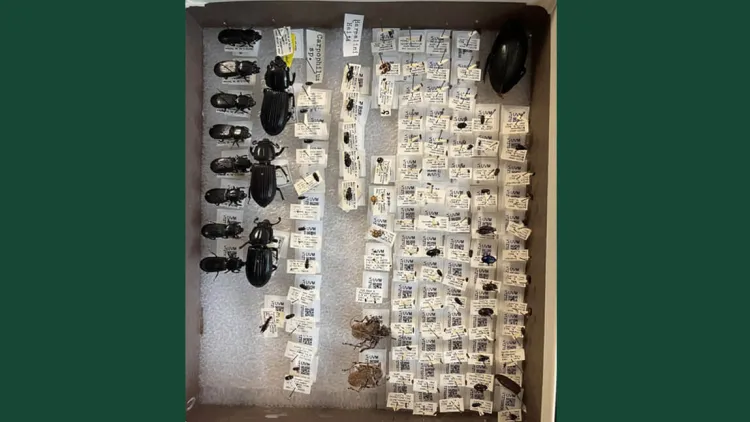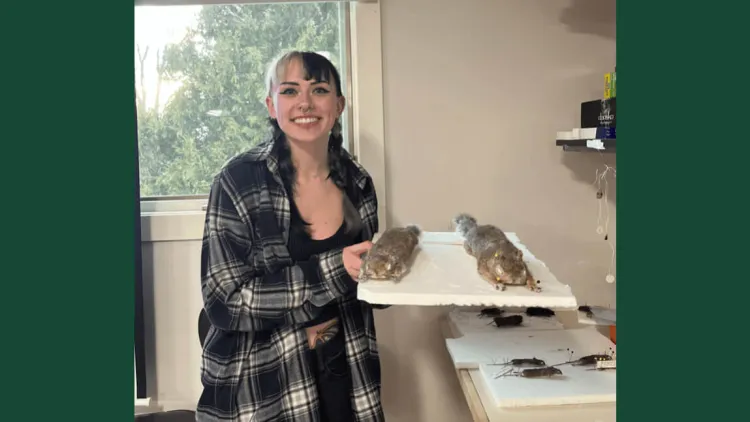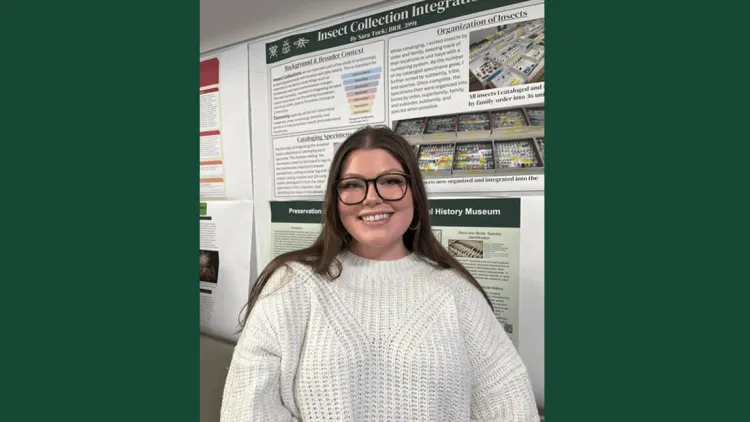When most people think about science, they often picture bubbling reactions under the fume hood and chasing down animals to tag in the field. But the Blundell House on Redstone Campus hosts a different kind of research. Stepping into the Natural History Museum feels like entering a time portal. There is a huge glass display of all kinds of birds, some now extinct. Hidden in drawers are eggs, seashells, and insects waiting to be cataloged by undergraduate interns.
One intern, Finn Flynn, a sophomore studying biology, spent a semester searching through 66,270 beetles to determine which were from Haiti. Finn found 272 Haitian beetles, meaning that the University of Vermont has one of the largest collections of Haitian beetles, second only to Harvard University. This collection is unique in that no other museum contains Haitian beetles from the 1970s and 1980s. As Finn said, “It's super weird that the University of Vermont has this collection.”
In a world losing biodiversity left and right, it can be difficult to quantify change without understanding the starting point. Natural history museum collections are the closest scientists can get to going back in time. Finn said that “where this comes back to natural history collections is that we're really able to, using the tiny little pockets of collections from this region, have a little window into what it was like there before we saw this horrible extinction crisis”.
That's what Charles Woods and a team from the University of Vermont were thinking in the 1970s when they traveled to Haiti to identify essential areas of biodiversity to protect as national parks and conservation areas. On this trip, as researchers do, they collected beetles to bring home. Fifty years later, and through several location changes, the Haitian beetle collection became mixed in with other local beetles. Along with cataloging and sorting which beetles were from Haiti, Finn undertook the passion project of bringing this history to light.

One reason that Finn was drawn to UVM was because of the immense opportunities for undergraduates to participate in active museum collections research. There are several other undergraduate students who are also working on projects at the Natural History Museum. J Isaacson has been going through a worldwide bird collection from the 1800s to gather data on species, collection date, location, and collector name. This information will be added to a database, making it available to scientists everywhere. Lilo Schultz has been skinning small mammals such as a jumping mouse, squirrels, a star-nosed vole, and a rat to prepare the specimens for storage. These will be used to understand changes in the population size, color, morphology, and even genetics. Through the BIOL 3991 museum internship course, led by Dr. Ellen Martinsen, additional undergraduate students are looking at lady beetles, bird eggs, and shells with the goal of compiling a public online data resource.

The Natural History Museum also hosts guest lecturers such as Spencer Hardy, who spoke to students about how he has used natural history collections to evaluate local bee populations. While the Natural History Museum is only available to see by appointment, it is bustling with exciting research and rare collections. As Charlotte Nobel said, “In the realm of conservation, natural history museums are an extremely important and undervalued resource for a lot of research work. Something that I didn't know about until Dr. Martinson told me about it. But now that I'm here, I see the value of all the work that people are doing.”

